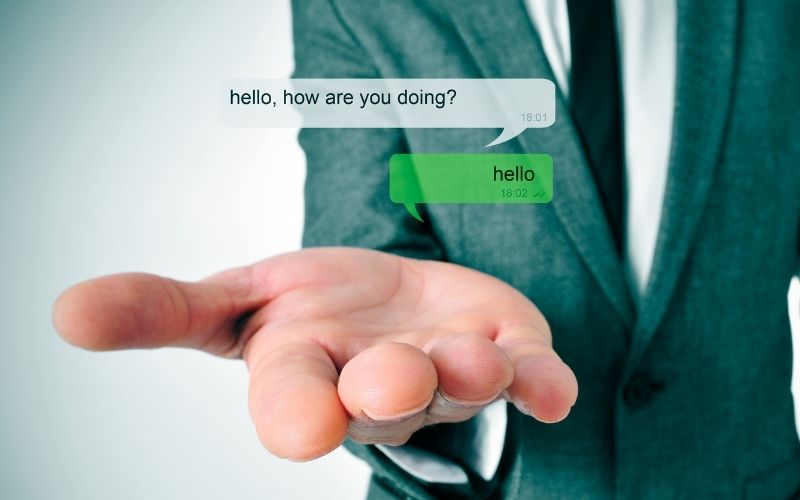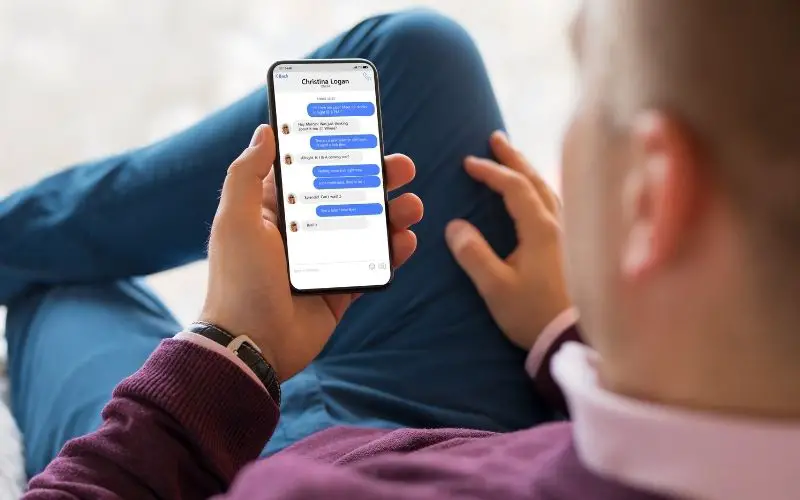Table of Contents
Back in the old days when iMessage was first introduced, it was one of the most pivotal feats of Apple. Dare I say, it was the one feature on the iPhone that kick-started its rise to stardom?
Okay, it wasn’t that big of a deal, but I’ve known and met countless people who have told me they won’t move away from Apple because they don’t want to be a green bubble.
What was weird was that it took Google almost a decade to finally decide that Android needed its own superfast native messaging system. Not just another app, but an iMessage-like feature that’s completely integrated into their standard messaging system. By this time, it was just too late to compete. But the new RCS feature raises a question.
Can Android users see when iPhone users are texting now? Or vice versa?
The short answer is no. Google’s RCS messaging platform which is available for all devices will likely never be adopted by Apple. Apple’s own propriety system uses iMessage which is very similar to RCS. However, the 2 systems at this point are just not compatible, and unfortunately, they never will be. Apple would need to adopt RCS into iMessages, which is not something Apple would do. It’s too far invested into iMessage which is one of its key features that keep its users staying within the Apple ecosystem.
But to better understand what’s really happening, let’s dive into both stories.
Google’s RCS vs Apple’s iMessage
Google had finally replaced its old SMS method and moved onto a newer method which they call a new standard. It’s call RCS or Rich Communication Services and it works very similarly to iMessage.
This technology is actually available to everyone including Apple. But it’s highly unlikely that Apple will play along nicely.
Google is slowly bringing more features to RCS messaging and has recently made RCS messaging encrypted as well. So that’s a good thing.
The table below simply provides a list of all features that are capable within a peer to peer message. That means that these are features only available for RCS when the conversation is happening between RCS users on both ends.
Likewise with iMessage, these features are only available when it’s created between 2 iMessage users.
It’s not cross platform.
| Features | Google RCS | Apple iMessage |
|---|---|---|
| Chat over Wifi or data | Yes | Yes |
| High res photo & videos | Yes | Yes |
| See when someone’s typing | Yes | Yes |
| See if messages are received | Yes | Yes |
| Change name of group chats | Yes | Yes |
| Add/remove people from groups | Yes | Yes |
| Encrypted messages | Yes | Yes |
| React to a message | No | Yes |
| Bubble color with iMessage | Light blue | Light blue |
| Bubble color with RCS | Dark blue | Green |
So you can see that almost all capabilities are slowing being checked and the RCS features are quickly catching up to iMessage.
Unfortunately, as of right now, RCS isn’t able to react to a message. On iMessage to iMessage, you can tap on a friend’s reply and open up many options that allow you to interact more with the message.
It’s currently not an option on Google’s RCS, but Google does have plans to make it happen soon.
UPDATE: Google has already implemented and deployed a react to message feature which gives you the ability to place emoji’s right under a reply. I’m actually hoping one day that Google will allow us to quote link replies which are super helpful in group messages. This feature I’m hoping for allows you to quote a message by any user in the group or 2 people conversation. This feature isn’t even available on iMessage.
As for something else that’s really interesting, is the last feature.
Yes, when Android users type to iPhone users, iPhone users still get the dreaded, feature-poor green bubble. But now, Android users can say the same for iPhone users.
When an Android RCS user types a message to another Android RCS user, both Android RCS users will get that feature-rich dark blue message bubble. However, if an iMessage user messages an Android RCS user, then the Android RCS user will receive the dreaded feature-poor light blue bubble message.
In order to understand the difference, let’s take a deeper dive into each platform.
Google’s RCS messaging
After nearly 25 years of SMS, Google has finally decided to move into the future with its own version of a standard messaging system.

RCS allows users to send messages in which it’s more of a chat feature like something you would find in instant messaging apps like Whatsapp, Telegram, Facebook Messenger, and many more.
Google has been surprisingly reluctant and slow when introducing RCS to Android for several years now. I remember hearing about how Google hyped the RCS train several years ago.
However, the one caveat that Google wanted was the support of other carriers. Other carriers were supposed to pledge to a single RCS standard, thus doing away with SMS at some point.
This never happened. In fact, Google spent years trying to persuade carrier companies like Verizon, AT&T, and T-mobile to follow along and build an infrastructure that would help support and make RCS the standard.
A few of the companies agreed and implemented it, others agreed and delayed it, and some didn’t care to respond.
Now here’s the kicker, a corporate level agreement was made between the 4 major US carriers, AT&T, Verizon, Sprint, and T-mobile to build their own RCS structure and leave Google behind.
After all the efforts of Google promoting this feature, the carrier companies decided to move forward without Google.
This had forced Google’s hand and almost overnight, Google flipped a switch on its backend and gradually supplied all Android users with RCS over the next few months. What we have today, is a result of Google deployed RCS and Google deployed it alone.
Apple’s iMessage
Apple’s messaging app was infused with iMessage and was launched in 2011 with iOS 5. Almost every year now, Apple continues to add new features to its rich messaging system through firmware updates.
Apple keeps iMessage for its own devices and has yet to release its service to other smartphone providers like Samsung and LG which run on Android. This is a very effective way to keep users within the Apple ecosystem.
Apple’s first mover’s advantage here is arguably the reason why so many people had moved to Apple, to begin with.
While Google was fighting for RCS standard agreements, Apple continued to entice its user base with incredibly immersive messaging features.
Apple’s iMessaging platform includes almost all of the same fundamental features including end-to-end encryption.
Final Thoughts
While Google is making leaps and bounds now in the messaging industry, it may already be too late to gain any popularity from the move.
The news came and for a single day, only a handful of articles discussed the release. While RCS is alive and well in nearly every modern Android device, almost no one knows about it.
Google is sure kicking themselves in the butt right now.

